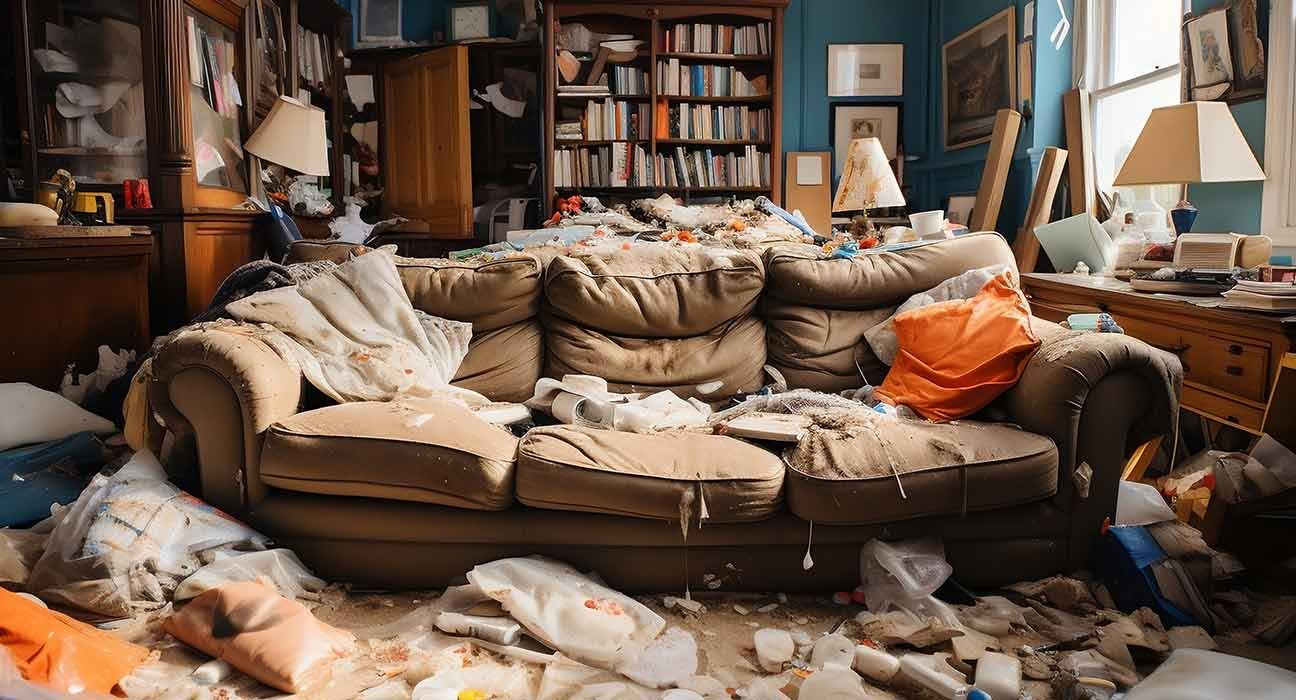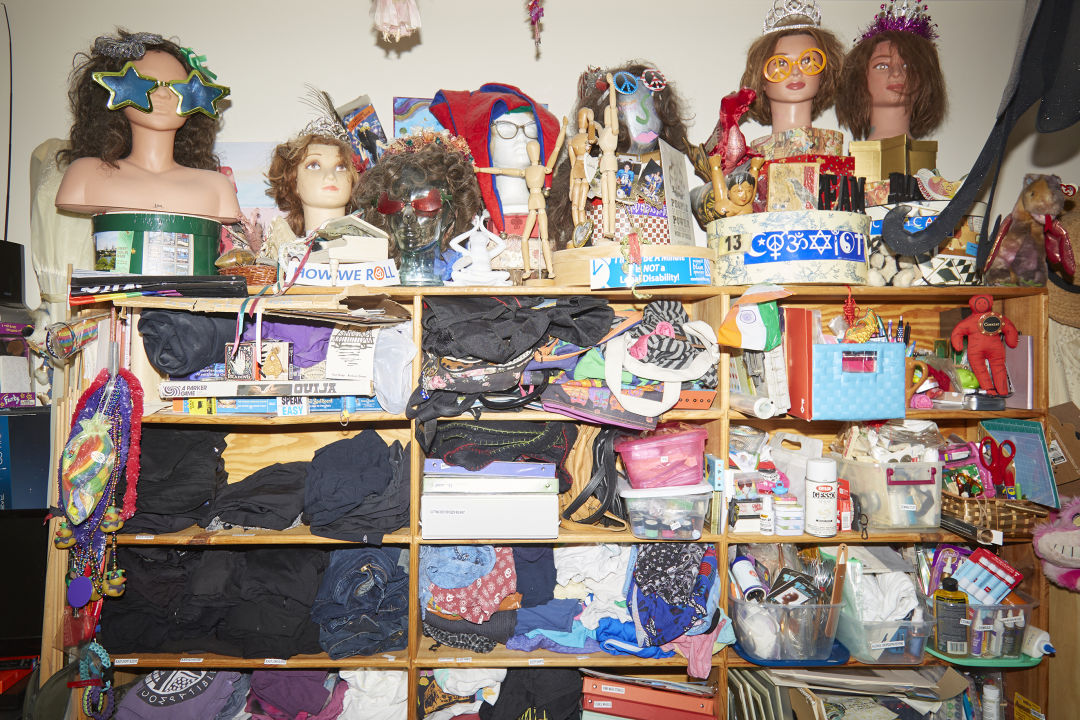Hoarding Disorder
1 in 40 people in the US has a hoarding disorder. A new treatment could help. Virtual reality isn’t just for video games. It may help people with a hoarding disorder evaluate their possessions and declutter their home.

Most of us have at least a few prized possessions we'd have a hard time letting go of. But those with a hoarding disorder—about 1 person in 40 in the United States—are compelled to hold onto the majority of their belongings, even when doing so means severely cluttered surroundings that decrease their quality of life and jeopardize their safety through increased risk of fire, mold or rodent infestation, or personal injury.
"People with a hoarding disorder have even died from items in their homes collapsing on them," says Brad Schmidt, a distinguished research professor of psychology at Florida State University.
While there are a few established treatments available for hoarding disorder, experts say novel treatments are needed. Now scientists at Stanford University are exploring a new strategy that uses virtual reality technology to help individuals with hoarding disorder experience the sensation and benefits of decluttering.
"This is the first study that allows patients with hoarding disorder to practice letting go of treasured objects while in simulations of their own homes," says Carolyn Rodriguez, a professor of psychiatry and behavioral sciences at Stanford University School of Medicine and the lead author on the study.
A first-of-its-kind study
The recent pilot study, published in the Journal of Psychiatric Research, shows that therapy powered by a virtual reality headset and handheld controllers can help those who hoard practice relinquishing their possessions using a simulation of their home before they declutter the space in real life.
"We know that the core of hoarding disorder involves an attachment to items and difficulty letting go, so practicing doing so is one of the treatments embedded in this research," says Rodriguez.
The study was conducted over 16 weeks and allowed its participants—all diagnosed with hoarding disorder—to enter virtual models of their homes to practice sorting and discarding items to which they felt attached. The virtual layout of their home and possessions was created with photos that were uploaded to create a 3D simulation, so the items were known and valued by each participant before they practiced throwing them out.
Rodriguez says that "78 percent of participants noted that virtual reality helped them increase real-life discarding."

Such results are promising, especially when considering that the study's participants ranged in age from 60 to 73 years old—the group in which hoarding is most common.
While about 2.6 percent of the population generally struggles with the disorder, its prevalence is known to be "as high as 6 percent" in older individuals, says Randy Frost, a Smith College professor emeritus of psychology and a co-author of the book Stuff: Compulsive Hoarding and the Meaning of Things.
Building on previous research
The Stanford study builds on work done at the University of Chicago that was published in 2020, which showed that individuals struggling with hoarding disorder were motivated to have a clean environment by using virtual reality to explore a rendering of their home in which the clutter had been removed.
The Stanford research is unique, however, in that it targeted older adults and allowed participants to contribute in that cleaning process—a crucial step in emotionally separating themselves from each item.
"We need creative tools for helping people with hoarding as they are often hesitant to seek or stay in treatment because of anxiety," says Gregory Chasson, an associate professor of psychiatry and behavioral neuroscience at the University of Chicago and lead author of the 2020 study. This new Stanford research, he says, “offers promising results for one such creative tool: virtual reality."
The technology could also be helpful in connecting hoarding disorder patients with mental health professionals in more practical ways. For instance, many existing hoarding treatment protocols include home visits from a therapist who provides the patient with motivation and assistance with discarding.
Such assistance “is often impossible though due to travel restrictions of therapists or reticence on the part of patients to allow others into their home," explains Frost. "Virtual treatment eliminates these difficulties and represents a significant advance in our ability to treat this difficult disorder."
A debilitating disorder
Hoarding disorder is an under-diagnosed and under-treated condition that was only accepted as a real psychiatric disorder in 2013.
"Hoarding disorder is far more common than once thought," says Frost. One reason it remained under-recognized for so long was "a tendency of those struggling with hoarding disorder to be reluctant to seek treatment," says Marla Deibler, a clinical psychologist based in Princeton, New Jersey who specializes in the treatment of hoarding disorder. Such individuals may feel embarrassed by the behavior, and some don't recognize that they have a problem until family members get involved.
"Those who do not believe they have a problem with hoarding may not experience distress, but those living with or near them probably do," says Gail Steketee, dean emerita of the school of social work at Boston University and co-author of Hoarding: What Everyone Needs to Know.
Indeed, one sign that the accumulation of belongings has become an issue is when it begins to impede one's life or prevents rooms from being used for their intended purpose. For example, piles of items on kitchen countertops that prevent sanitary meal preparation or items stacked on beds or throughout bedrooms, impeding sleep quality.
"Impairment can also mean problems with relationships, such as when a wife leaves her husband because she cannot live in his clutter anymore," Chasson adds.
Where to get help
While virtual reality devices are still in the research stage, the good news is that individuals struggling with hoarding disorder have other treatment options available to them.
One of the most studied and proven treatments for hoarding disorder is cognitive behavior therapy—a type of psychotherapy where a therapist follows specific practices to show a patient how to improve the control they feel over their impulses, thoughts, and behaviors.
"Cognitive behavior therapy treatment for hoarding disorder isn’t easy, but with a skilled therapist to keep the patient motivated, you can make a big difference in their life," says Schmidt.
There are other forms of talk therapy and highly structured workshops for hoarding disorder that experts say have also proven to be effective. :max_bytes(150000):strip_icc()/what-is-cognitive-behavior-therapy-2795747_final-a977e311cb8e471390666df948e873c3.png)
Preventive measures such as controlling which items are brought into the home in the first place can also be helpful. "Research has shown that once a possession enters the home of someone with hoarding disorder, it is seldom used," says Frost. Family members of those who hoard can be instrumental in preventing more items from entering the home and in helping the person remove clutter from their living space once it's accumulated to the point of becoming a problem.
Additional tips, resources, and names of treatment professionals who specialize in hoarding disorder can be found at the International OCD Foundation hoarding center website. For the individual struggling with hoarding disorder, "practice patience and self-compassion," advises Deibler. "Know that you're not alone and there is help."
Source
https://iocdf.org/
https://www.nhs.uk/mental-health/talking-therapies-medicine-treatments/talking-therapies-and-counselling/cognitive-behavioural-therapy-cbt/overview/#:~:text=Cognitive%20behavioural%20therapy%20(CBT)%20is,mental%20and%20physical%20health%20problems.
https://www.apa.org/ptsd-guideline/patients-and-families/cognitive-behavioral
https://www.mayoclinic.org/diseases-conditions/hoarding-disorder/symptoms-causes/syc-20356056#:~:text=Overview,getting%20rid%20of%20the%20items.
https://www.nhs.uk/mental-health/conditions/hoarding-disorder/










































